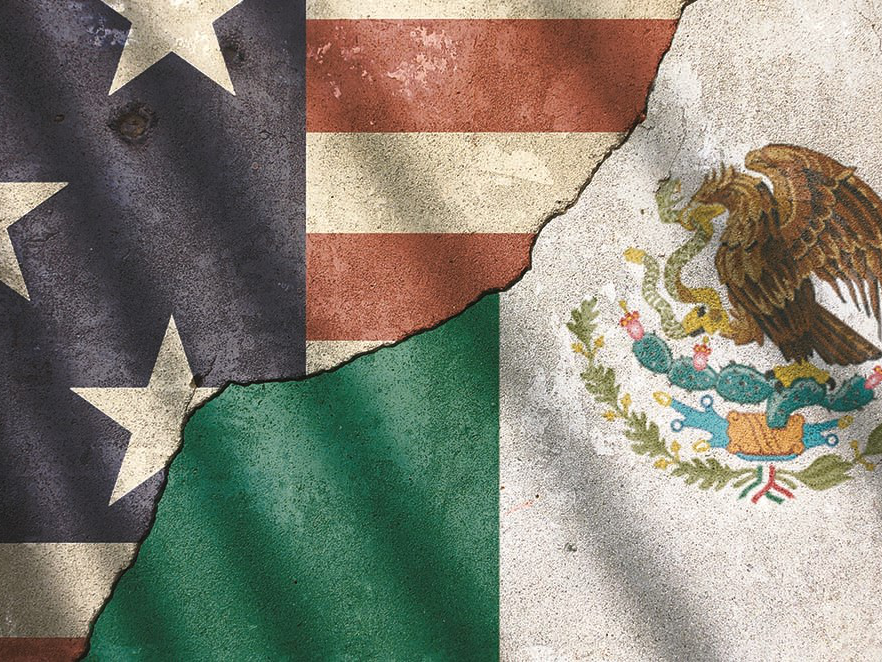
Beyond the wall
As a growth market investor, we are accustomed to heightened volatility in our markets, whether resulting from presidential elections, political instability, shifts in fiscal or monetary policies or periods of civil unrest. Our multi-decade investment legacy in these markets has taught us three important lessons – (i) the world is not linear (and ambiguity is an ever-present); (ii) it is dangerous to presume that common sense always prevails, at least in the short term ; and (positively) (iii) never under-estimate the power of a country to adapt to new circumstances.
Having said all that, even for experienced investors it has been challenging to remain sanguine in the period of heightened uncertainty that has followed President Trump’s election in November 2016. In the November edition of Actis Insights and Perspectives, we discussed the possible impact of the election on growth markets (see “Pollsters Trumped Again!”), and now that we are a month post-inauguration, we thought we should re-visit Mexico, to analyse the aftermath of the US presidential election on Mexico, probably the market most impacted by the protectionist rhetoric during the US election campaign.
“NAFTA la vista”
In contrast to the historical role played by the US as the architect of global free trade, the Trump campaign was anchored by a significant shift in US trade policy, whereby rising protectionism would underpin the thesis of “making America great again”. Trump made clear his intention to review multiple trade agreements, including NAFTA, and this has in fact played out in the series of recent executive orders emerging from the Trump White House.
NAFTA has strengthened trade relations between Mexico and the US, with ca. 80% of Mexico’s exports now going to the US, and with the manufacturing sector accounting for ca. 20% of GDP growth since 2008. That explains why a challenge to NAFTA from north of the border has seen the Mexican Peso weaken sharply, the Mexican stock exchange drop ca. 15% (in USD) and the country risk premium rise 60bps after President Trump was elected.
From an economic standpoint, the Central Bank of Mexico (Banxico) reacted quickly increasing the benchmark interest rate twice by a cumulative 100bps to 6.25%, against a market expectation of a 25bps increase. This move was in response to likely devaluation associated with the US election, which itself impacted inflation, the recent liberalization of gasoline prices, and the review of minimum wages: together these could boost inflation expectations. In order to try and curb excessive volatility in the Peso, the Central Bank has USD176bn in foreign reserves at its disposal as well as access to the Flexible Credit Line (FCL) with the IMF. In the political arena, rising risk of US protectionism, if realised, could catalyse populist movements in Mexico, during a period when leftist parties have been gaining ground in advance of Mexican Presidential elections in 2018.
So the reaction to the uncertainty has been rapid, and to date has done something to re-inject a degree of confidence into the economy. In the Mexican energy sector, where Actis’ renewable energy platform Zuma Energia operates, a scaling back of economic integration in the region could certainly impact on Mexico’s plan to increase the importance of natural gas in its power generation matrix, as that does depend on continued imports of US shale gas. However, to date we have seen no slowing down in the pace of investment in the sector and the importance of self-sufficiency in power generation is likely, if anything, to be increasingly recognised in future capacity auctions in the Mexican market. Good news for some perhaps, but for now and for the foreseeable future, these investments are likely to see higher funding costs and potentially reduced appetite from US investors.
What comes next? Political campaigns are usually marked by promises and polemic speeches, which are either amended or forgotten by a candidate when elected and the focus switches to how best to govern. As George Washington stated: “To form a new government requires infinite care and unbounded attention; for if the foundation is badly laid, the superstructure must be bad.”
In consequence, we expect that a number of President Trump’s campaign promises may be watered down, and even if the border wall is finally built, the NAFTA issue might not be as simple as the President believes it to be. Two main factors drive this view – the US-Mexico trading partnership has up until now resulted in extensive supply-chain integration, with 60% of the exports in the US classified as intermediate goods, acting as an important engine for the US production ecosystem. Hence, a potential US withdrawal from NAFTA would harm both sides. Secondly, regardless of the ability of a US President to issue executive orders, it seems clear from the reaction to the recent travel ban, that the US President unilaterally withdrawing from NAFTA would face a challenge, whether from the US Senate or the courts.
As we highlighted in our prior edition, if the US is to continue to build an export base, it will need to recognise that 80% of the growth in world’s middle class is going to come from growth markets, and Mexico, given its strategic location, will be an important piece of this puzzle.